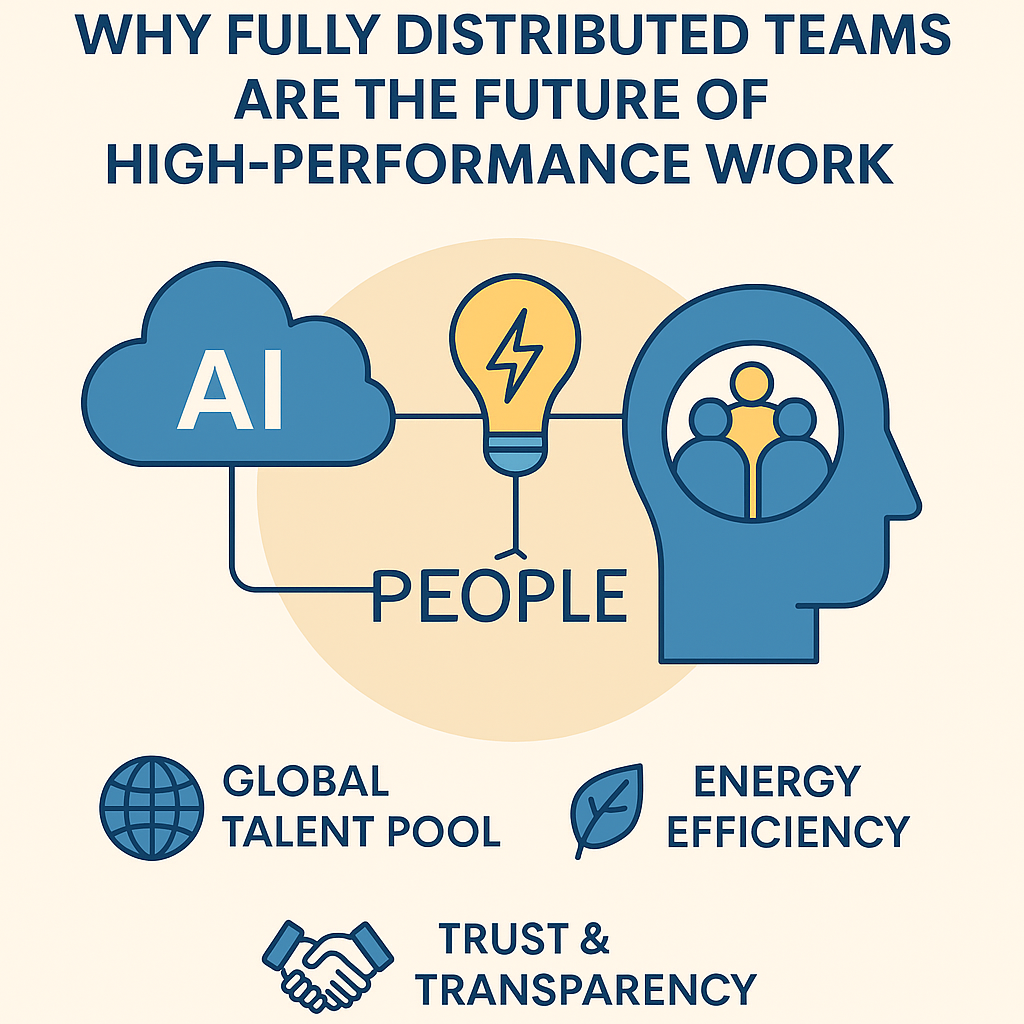The World Has Changed. Work Must Too.
At Honeywell’s Future of Energy Summit in Washington D.C., the discussion revolved around energy and AI—the twin engines propelling business transformation. But quietly woven into this dialogue was another, equally transformative trend: the rethinking of where work happens, and how.
While organizations debate hybrid models and office returns, some companies are going all in on remote—and thriving.
This isn’t a reluctant compromise. It’s an intentional, strategic choice.
The distributed workplace is not a temporary deviation—it is becoming the new default.
AI and Energy: Infrastructure for the Digital Workplace
As Page Crahan of Google X said, “AI is becoming as ubiquitous among businesses as energy.” The analogy holds up—AI is now fundamental infrastructure, just like electricity once was. So is the need to power this AI responsibly and efficiently.
But as Gordon Bitko from the IT Industry Council highlighted, AI is a double-edged sword: it uses significant energy, but it can also help optimize energy consumption.
The lesson? The tools of the future—AI, data centers, digital twins—require rethinking every layer of business: from power grids to people. And that includes how and where employees work.
Enter: Fully Remote Workplaces.
Companies like Percona, a software company with a fully remote workforce, aren’t waiting for consensus or comfort zones. They're embracing a model that aligns with the very nature of cloud-native, AI-powered work: distributed, dynamic, data-driven.
Remote Isn’t Less—It’s More
Contrary to traditional assumptions, fully remote work isn’t about working less or detaching from culture. It’s about working differently—with flexibility, autonomy, and impact at its core.
The benefits go far beyond real estate savings:
-
Access to global talent: No geographic barriers mean access to the best minds, not just the closest ones.
-
Reduced carbon footprint: Less commuting, less energy consumption from commercial spaces.
-
Resilience and continuity: Remote teams can operate across time zones, weather disruptions, or regional crises.
-
Focus and output: When done right, remote work means fewer distractions, smarter meetings, and asynchronous deep work.
Ann Schlemmer, CEO of Percona, has made it clear: her team isn’t returning to the office anytime soon. Why? Because they’re already thriving without it.
The Trust Layer: Human Connection in a Virtual World
Technology alone doesn’t build great remote teams—trust does.
Crahan emphasized that real breakthroughs come not just from advanced platforms, but from people talking to each other, across roles, departments, and borders.
In a remote setup, this means intentionally designing communication channels, investing in digital culture, and embracing asynchronous collaboration.
Companies that succeed in the fully remote model do so by mastering the human side of the equation—trust, transparency, and teamwork—powered by tools, not overshadowed by them.
The Virtual Delivery Center (VDC): A Blueprint for What’s Next
At AiDOOS, we see these shifts converging in what we call the Virtual Delivery Center (VDC)—a model where fully distributed teams come together on demand, powered by AI, automation, and domain expertise. It's the evolution of remote work into a performance-driven, execution-ready system.
Unlike traditional outsourcing or freelancing, the VDC model brings:
-
Ownership and accountability
-
End-to-end delivery
-
Integrated human + digital workflows
-
Enterprise-grade security and compliance
This is remote work elevated to an infrastructure level—just like AI, just like energy.
The New Work Equation: AI + Energy + People = Infinite Possibility
Remote work is no longer a debate—it’s a design choice. And for forward-thinking companies, it’s a path to innovation, resilience, and scalability.
The future of work is:
-
Remote by design
-
Agentic by default
-
Trust-led by necessity
-
Global by advantage
As Bitko put it: the real opportunity lies in using AI to optimize everything—from data center workloads to workforce productivity. And that starts with removing artificial constraints—like physical offices—for digital-first companies.
Conclusion: The Distributed Edge Is the Competitive Edge
If AI is the new electricity and energy is the new enabler, then remote work is the new operating system. And the companies that build on this system—intentionally, securely, and humanely—will define the next decade.
Now is not the time to retreat to old models. It’s time to reimagine what’s possible when work, workers, and workflows are no longer bound by walls.

